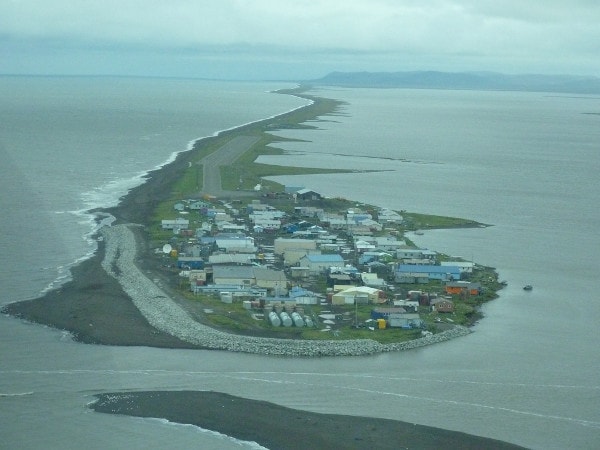This week, the public will get its chance to provide input on plans to build an evacuation route for the climate-threatened Arctic village of Kivalina, Alaska.

For most of its history, Kivalina (population 400) has been an advantageous location for the Iñupiat whale hunters who live there. In the past, the sea ice that formed around the barrier island along Alaska's northwestern coast made it possible for residents to support themselves by hunting bowhead whales.
As sea ice has declined, Kivalina has been hit doubly hard: At the same as whaling has become less safe, the island has been robbed of protection from the heavy seas that are churned up by increasingly powerful winter storms in the Chukchi Sea.
Efforts have already been made to reinforce the island, but scientists predict that the narrow stretch of land where Kivalina is situated will succumb to erosion, perhaps within the next decade.
The community has been working with local, state and federal authorities on the all-but-impossible task of finding a relocation solution that is both culturally acceptable and fiscally feasible. (The estimated cost of moving the village is as high as $400 million.)
While people continue to live in Kivalina, the immediate concern is how to evacuate them in the event of a major storm. An October 2007 storm give an idea of what they need to prepare for. At that time, the island was inundated by debris-laden storm surge that rendered the airstrip, its only connection to the mainland, unusable. Instead, residents had to be flown out by helicopter.
The incident "illustrated that Kivalina currently has no safe method of evacuation in the event of a catastrophic storm surge," the state Department of Transportation noted in a report published in November containing proposals for an evacuation route.
The Dec. 5 meetings, being held in Kivalina and two other locations, will seek to identify which of the routes would suit the community best.
The evacuation route, a road that will connect the island to the mainland, has been proposed as a temporary solution, but the state has also left open the possibility of not building a route at all.
While this would eliminate any environmental impact, as well as the possibility of damage to cultural or historical sites, the report finds this would leave the community "exposed to environmental threats" and "without reliable options for evacuation during storm events."
The proposed routes will offer the people of Kivalina a road to higher ground, but, before long, it may become necessary to move the village in order to save it.
Author: Kevin McGwin, Arctic Now
